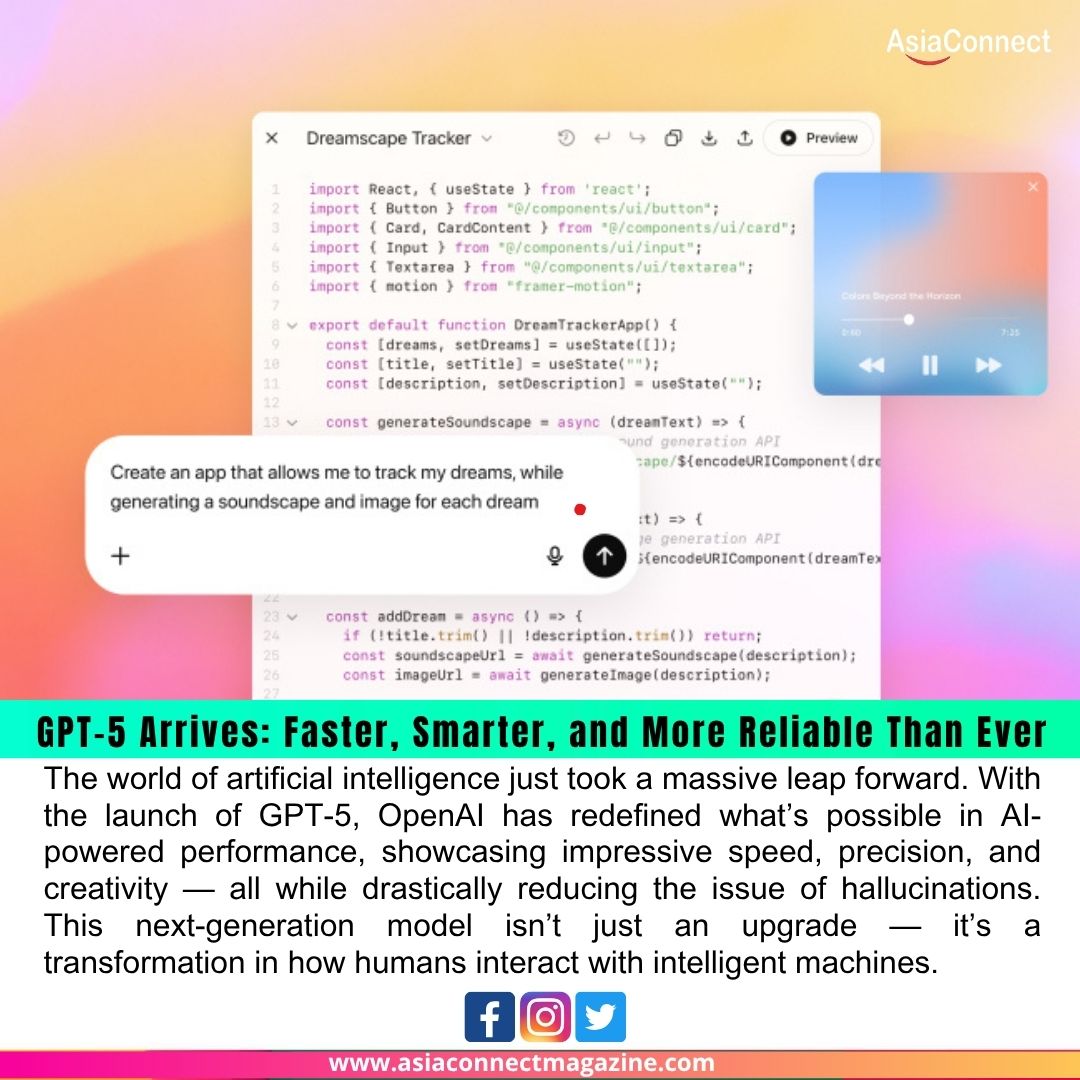The world of artificial intelligence just took a massive leap forward. With the launch of GPT-5, OpenAI has redefined what’s possible in AI-powered performance, showcasing impressive speed, precision, and creativity — all while drastically reducing the issue of hallucinations. This next-generation model isn’t just an upgrade — it’s a transformation in how humans interact with intelligent machines.
One of GPT-5’s most talked-about advancements is its Ph.D.-level code generation, allowing developers to bring complex software ideas to life in record time. In a recent demo, GPT-5 built a fully functional French-learning web application — complete with user interface, interactive quizzes, and backend logic — in under 60 seconds. This kind of performance was once unthinkable, but GPT-5 is proving that AI can now serve as a true collaborator in software development.
What makes GPT-5 stand out from its predecessors isn’t just speed. It’s the accuracy and depth of its output. Hallucinations — instances where AI confidently gives incorrect or fictional information — have long been a challenge for large language models. GPT-5, however, brings a significantly reduced hallucination rate, thanks to architectural improvements, enhanced training methods, and more rigorous alignment with factual data sources. Whether it’s writing code, summarizing research, or answering complex questions, GPT-5 is more grounded and trustworthy than ever before.
In terms of performance, GPT-5 is noticeably faster and more responsive, even during high-load tasks. Developers can now iterate quickly without needing multiple prompts or debugging sessions. For educators and language learners, GPT-5’s applications go beyond code. The AI can now generate lesson plans, immersive quizzes, pronunciation guides, and even simulate realistic conversation practice in multiple languages — including French, Spanish, Mandarin, and more — tailored to the user’s level and goals.
Another exciting development is GPT-5’s improved multi-modal capabilities. It seamlessly understands and generates across text, images, and code — allowing users to, for example, upload a rough sketch of a website and receive complete HTML, CSS, and JavaScript code in seconds. GPT-5’s capacity to interpret visual cues and connect them with textual context opens new doors in creative design, product development, and education.
For business users, GPT-5 also offers smarter decision support. It can analyze trends, process large datasets, and even generate strategic insights with clearer reasoning and fewer logical flaws. The model’s integration into enterprise tools is expected to bring automation to a whole new level — particularly in customer service, legal research, software engineering, and healthcare.
With GPT-5, OpenAI isn’t just pushing boundaries — it’s reshaping the role of AI in our daily lives. Whether you’re a coder, teacher, entrepreneur, or just a curious user, GPT-5 is designed to help you do more, learn faster, and build smarter — all while keeping hallucinations in check.





